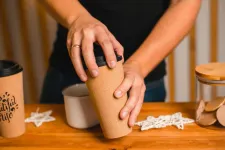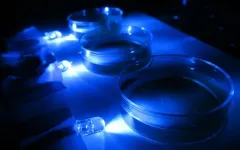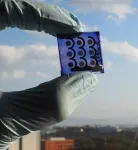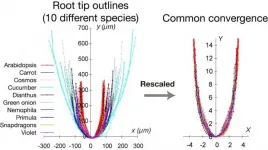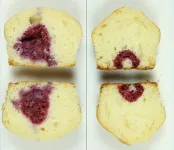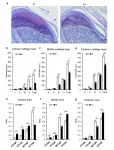(Press-News.org) Takeaway coffees - they're a convenient start for millions of people each day, but while the caffeine perks us up, the disposable cups drag us down, with nearly 300 billion ending up in landfill each year.
While most coffee drinkers are happy to make a switch to sustainable practices, new research from the University of South Australia shows that an absence of infrastructure and a general 'throwaway' culture is severely delaying sustainable change.
It's a timely finding, particularly given the new bans on single-use plastics coming into effect in South Australia today, and the likelihood of takeaway coffee cups taking the hit by 2022.
Lead researcher, UniSA's Dr Sukhbir Sandhu, says the current level of coffee cup waste is unsustainable and requires a commitment from individuals, retailers, and government agencies alike to initiate change.
"There's no doubt we live in a disposable society - so much of our lives is about convenient, on-the-run transactions. But such a speedy pace encourages the 'takeaway and throwaway' culture that we so desperately need to change," Dr Sandhu says.
"Educating and informing people about the issues of single-use coffee cups is effective - people generally want to do the right thing - but knowing what's right and acting upon it are two different things, and at the moment, there are several barriers that are impeding potential progress.
"For example, if your favourite coffee shop doesn't offer recyclable or compostable cups, it's unlikely to stop you from getting a coffee; we need that coffee hit and we need it now. So, strike one.
"Then, with the popularity of arty, patterned paper cups on the rise, you may think you're buying a recyclable option. But no - most takeaway coffee cups are in fact lined with a waterproof plastic, which is not only non-recyclable, but also a contaminant. Strike two.
"Finally, if you happen upon a coffee shop that does offer recyclable coffee cups, once you're finished, where do you put it? A lack of appropriate waste disposal infrastructure means that even compostable cups are ending up in landfill. Strike three.
"As it happens, compostable cups need to go into a green organics bin, but these bins might not be easily accessible in public settings like the standard shopping precincts."
While the South Australian government is moving in the right direction with its Replace the Waste campaign, changing our 'grab and go' culture is challenging.
"It's important to drive home clear, strong messages about single-use plastics and their impact on the environment," Dr Sandhu says.
"The more we can drive people to choose reusable cups, the more uptake we'll see. People like to mimic what their colleagues, friends and peers do, especially when it is the right thing."
INFORMATION:
Media contact:
Annabel Mansfield
T: +61 8 8302 0351
M: +61 417 717 504
E: Annabel.Mansfield@unisa.edu.au
Researcher:
Dr Sukhbir Sandhu
T: +61 8 8302 0735
E: Sukhbir.Sandhu@unisa.edu.au
Tsukuba, Japan - Single-celled algae and animal sperm cells are widely separated in evolution but both swim in the same way, by waving their protruding hairs, called cilia or flagella. Motion is driven by molecular motors, complex assemblies of proteins that exert a force when changing shape. The motor proteins are connected to the cell's internal skeleton of microtubules; the moving force from the motor causes microtubules to slide, moving the flagella and propelling the cell.
Now a team led by Professor Kazuo Inaba of the University of Tsukuba in collaboration with scientists from Osaka University, Tokyo Institute of Technology and Paul Scherrer Institute has described a new protein that is closely ...
While many people believe misinformation on Facebook and Twitter from time to time, people with lower education or health literacy levels, a tendency to use alternative medicine or a distrust of the health care system are more likely to believe inaccurate medical postings than others, according to research published by the American Psychological Association.
"Inaccurate information is a barrier to good health care because it can discourage people from taking preventive measures to head off illness and make them hesitant to seek care when they get sick," said lead author Laura D. Scherer, PhD, with the University of Colorado School of Medicine. "Identifying who is most susceptible to misinformation ...
Electric scooters or "e-scooters" are taking over cities worldwide and have broad appeal with tourists. Although e-scooter use declined during the COVID-19 pandemic, its popularity could rebound rapidly, especially if travelers start to substitute scooters for transit on some shorter trips. Shared e-scooters in particular, are a rapidly emerging mode of transportation, but present a host of regulatory challenges from equitable distribution to parking infrastructure to pedestrian safety, among others.
Understanding travel demand patterns of shared ...
An associate professor from RUDN University found out the effect of the number and size of pores on the permeability of bone implants by biological fluids. The results of the study could help choose the optimal physical parameters of implants. The results of the study were published in the International Journal of Engineering.
For an implant to survive in the body and to take the place of bone tissue, it should be made of a non-toxic, biologically inert, and wearproof material. However, at the same time, it should be light, porous, and permeable by biological liquids. If an implant does not interfere with the transfer of oxygen, minerals, and nutrients, new bone tissue and blood vessels start to grow around it, and a patient's ...
Osaka, Japan - Osaka University researchers employed machine learning to design new polymers for use in photovoltaic devices. After virtually screening over 200,000 candidate materials, they synthesized one of the most promising and found its properties were consistent with their predictions. This work may lead to a revolution in the way functional materials are discovered.
Machine learning is a powerful tool that allows computers to make predictions about even complex situations, as long as the algorithms are supplied with sufficient example data. This is especially useful for complicated ...
With their exuberant colours, fiery personalities and captivating courtship displays, the fairy wrasses are one of the most beloved coral reef fish. Despite this, the evolutionary history of its genus was not well understood - until now.
Fairy wrasses diverged in form and colour after repeated sea level rises and falls during the last ice age, finds a new study. Published in top journal Systematic Biology, it employed a novel genome-wide dataset to make this discovery.
Lead author, ichthyologist and PhD candidate at the University of Sydney, Mr Yi-Kai (Kai) Tea, says ...
Osaka, Japan - Nature is full of diversity, but underneath the differences are often shared features. Researchers from Japan investigating diversity in plant features have discovered that plant root tips commonly converged to a particular shape because of physical restrictions on their growth.
In a study published in February in Development, researchers from Osaka University, Nara Institute of Science and Technology, and Kobe University have revealed that plant root tips are constrained to a dome-shaped outline because of restrictions on their tissue growth. This study is one of the papers selected as a Research Highlight published in this issue of Development ...
Raspberry muffins are in our future.
Washington State University scientists have figured out a way to treat raspberries before they're frozen so that they maintain their structure when thawed.
The tart little berries are very delicate and freezing damages their cells. They turn to mush when baked and leak juice into the surrounding baked product, making them unattractive and diluted in flavor. As a result, frozen raspberries are rarely used in baking, whether at home or in commercial bakeries. But that's about to change.
In a recent article published in Food and Bioprocess ...
Making cheese leaves a lot to chance as a batch could be ripened for months or even years before a problem is discovered, which could send a prized batch of cheddar to be sold off cheap as an ingredient for processed cheese.
It's part of why cheese is so complex and expensive to make - a factory could invest lots of time and money into what they think will be a top-graded batch, only to discover it's a flop when it's too late to fix.
But new research from RMIT University in Melbourne, Australia allows quality to be checked much earlier and more precisely in the process, giving manufacturers a better chance to react to issues with the ripening process.
Dr ...
Researchers from Tokyo Medical and Dental University (TMDU) observe underdeveloped jaw cartilage in newborn rats exposed to periods of low oxygen
Tokyo, Japan - Breathing in adequate amounts of oxygen is critical for human life. However, certain disorders can cause individuals to go through periods where they are exposed to periodical low levels of oxygen, called intermittent hypoxia (IH). This is common in people who suffer from some sleep disorders like obstructive sleep apnea. Although we know IH can cause neurological development issues, it is not clear how it affects cartilage. Now, researchers at Tokyo Medical and Dental University (TMDU) have shown that IH can result in underdeveloped jaw cartilage in rats.
In an article published in Scientific Reports, researchers ...
